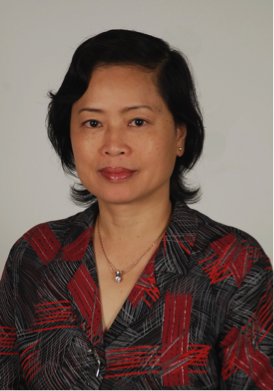Titled “Paying It Forward- How Education Can Create a Better
Environment for Future Generation,” the interview focused on her work
in the field of environmental pollution and her inspiration to pursue
science.
The interview can be read at this link:
http://blog.usaid.gov/2013/03/paying-it-forward-how-education-can-create-a-better-environment-for-future-generations/
The entire text of the interview is also reproduced below:
Environment for Future Generations
This year’s Women’s History Month theme is “Women Inspiring Innovation
Through Imagination: Celebrating Women in Science, Technology,
Engineering and Mathematics”. In observance, USAID is spotlighting
innovative women working in these fields. Below is an interview with
Nguyen Thi Kim Oanh, PhD, Professor of Environmental Engineering and
Management at the Asian Institute of Technology in Thailand.
Q: How would you describe your work on emissions
impact to an audience unfamiliar with this field? Why is this work
important?
A: My research focuses on air pollution and its
effects on public health, crops, and climate. Air pollutants are
released from a variety of sources – stoves, indoor heating, vehicles,
and heavy industry. Outdoor fires such as burning of household trash or
agricultural wastes in the field, like rice straw, also contribute.
These pollutants directly affect our health. They may also be toxic to
food crops, affecting the availability and price of the food we
eat.
Some small sources of pollution can actually be quite significant. For
example, smoke from indoor cooking and heating contains many toxic
pollutants, including fine particles, gases such as carbon monoxide,
and many carcinogens. Women and young children, who often stay indoors,
have a higher chance of contracting respiratory diseases due to
inhalation exposure.
Cleaner cooking stoves emit less smoke and have more effective ways to
vent the dirty smoke out of kitchen than traditional cooking methods.
Many governmental and non-governmental organizations are now working to
produce and distribute cleaner and more effective cookstoves throughout
the world.
Q: Describe your career path – how did you first get
involved in science? What obstacles did you face along the way?
A: I am grateful to my mother. Although she did not
get a chance to attend school formally, she understood the value of
education, and always encouraged her children to study. She believed
that with education we would have a better life. That has certainly
been true for me and my siblings.
I received my first engineering degree in meteorology from Odessa
Hydrometeorology University, Ukraine. After that, I came back to
Vietnam and became a lecturer at Hanoi University. I was given
scholarships to pursue my Master’s and PhD in Environmental Engineering
and Management at the Asian Institute of Technology (AIT), which
presented a great opportunity for me to further advance my scientific
training.
Now, as a professor at AIT, I enjoy educating young people about
environmental research and encouraging them to use their knowledge to
work for a better environment for us and for future generations. I
particularly try to encourage female students to be confident, and to
believe that, with dedication and hard work, they can excel in their
research. Women have just as much potential to achieve scientific
success as men.

